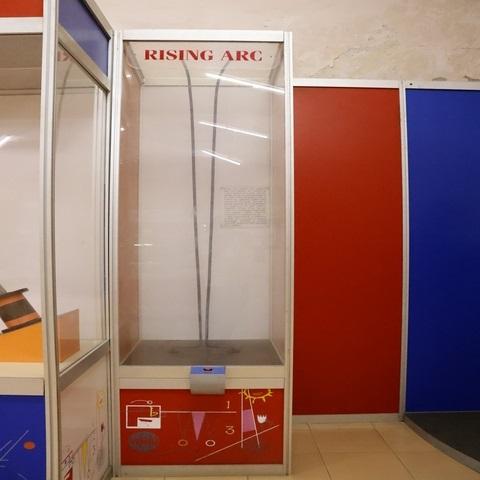Electro-magnet
Changing magnetic poles
A magnet has two poles – a North pole and a South pole. It is at each pole that the magnetic force is the strongest. When the like poles of two magnets are brought together, they push or repel each other. When unlike poles are brought together, they pull or attract each other.
Momopole/Dipole/Tripole strategy
A tiny current loop act's as a tiny magnet technically called a magnetic dipole. The strength of that tiny magnet, the magnetic dipole moment m, is given by m = NIA, giving the units - Ampere meter square. The magnetic dipole moment is a vector quantity and its direction is given by the right-hand thumb rule. Magnetic dipoles are different than electric dipoles in that, there are no magnetic monopoles, only dipoles.
Sliding magnet on inclined plane
A magnet that slides down on a metal slope (or inclined plane) will experience a braking effect due to the magnetic fields of the currents induced in the surface of the slope.
Falling magnet through an AL tube
This demo shows that the direction of an induced current is always such as to oppose the change in the circuit or the magnetic field that produces it.
Current from magnet (Faraday)
Faraday’s First Law of Electromagnetic Induction states that whenever a conductor is placed in a varying magnetic field, electromagnetic fields are induced known as induced emf.Faraday’s Second Law of Electromagnetic Induction states that the induced emf in a coil is equal to the rate of change of flux linkage.
Parallel currents behavior
In a series circuit the components are connected end-to-end, one after the other.They make a simple loop for the current to flow round. In a parallel circuit the components are connected side by side, so the current divides, some going one way and the rest the other way.
Origin of magnetism
Magnetism is a concept introduced in physics to help you understand one of the fundamental interactions in nature, the interaction between moving charges. Like the gravitational force and the electrostatic force, the magnetic force is an interaction at a distance.
Hennery oersted experiment
Oersted's law, is the physical law stating that an electric current creates a magnetic field.[2]
Rising Arc
"Flip the switch, watch the spark reach for the stars - a voltage dance, guarding our gear with electrical charm!"
Category
Wing
Feedback
We are actively collecting feedback to improve our website, communication and processes to help students, teachers and curious people so that they can make the best use of the services at Shillong Science Center. Give us your feedback so that we can serve you better.
